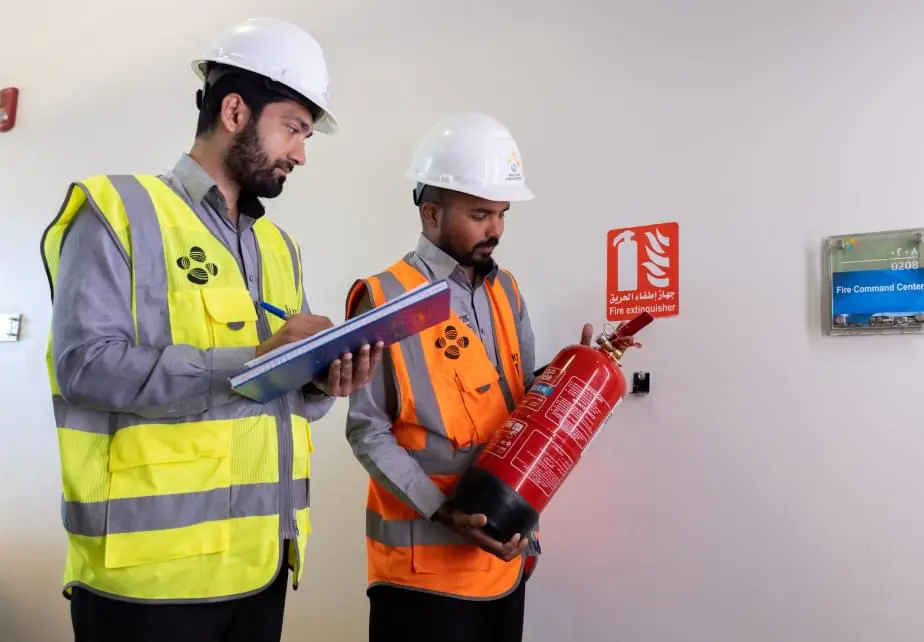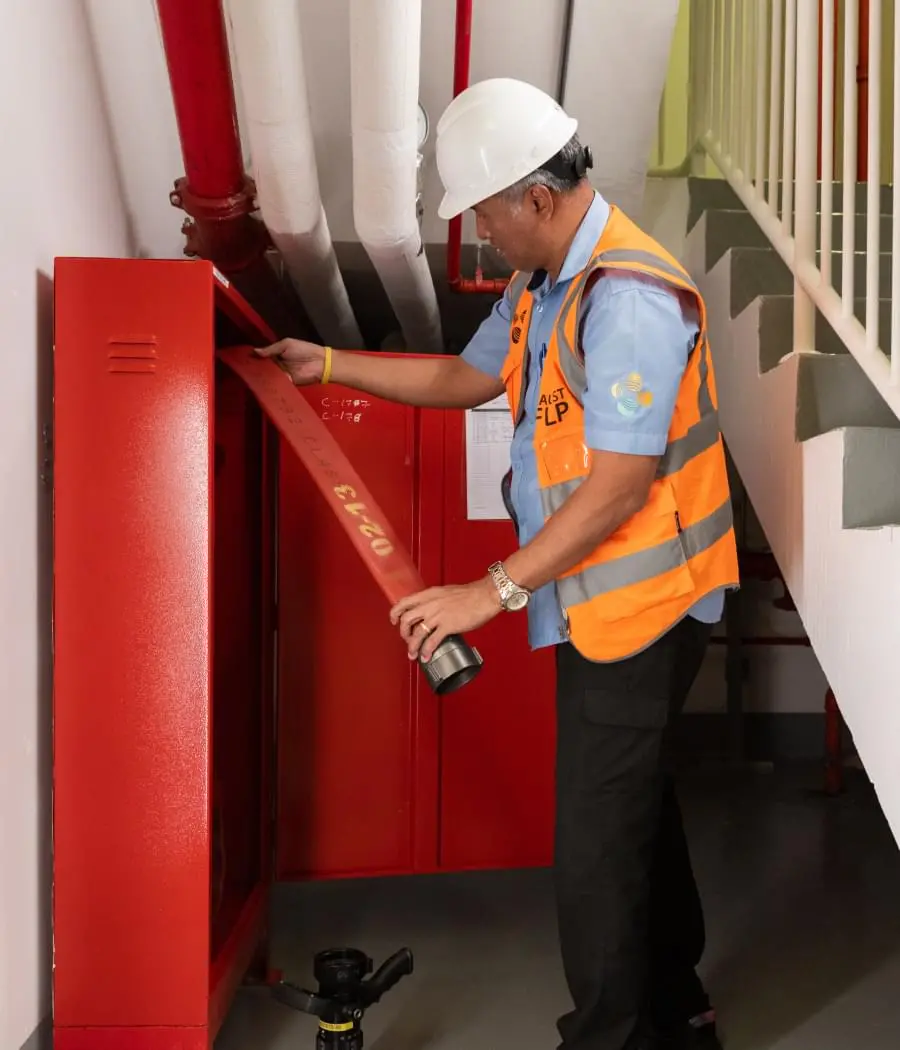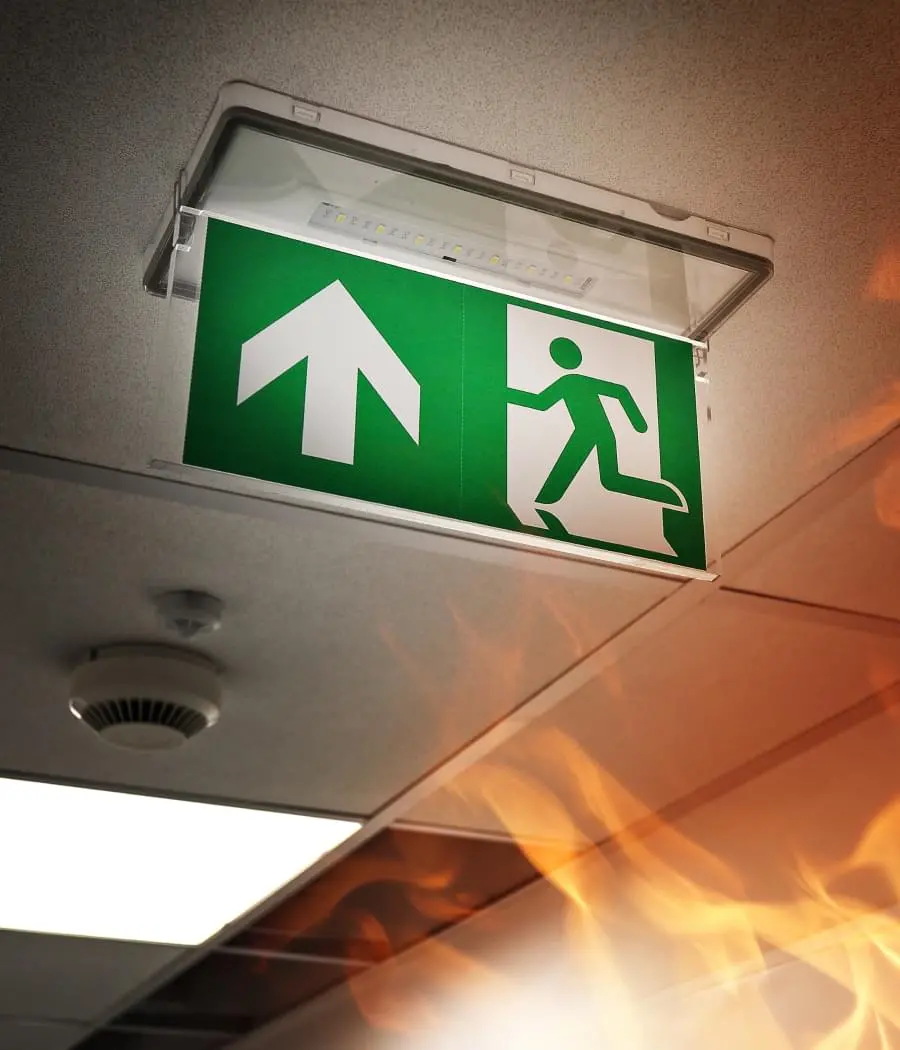




Quick Links:


KAUST Fire Protection is the authority having jurisdiction (AHJ) in relation to all fire and life safety matters throughout KAUST. Our response personnel are supported by the KAUST Fire Protection team (KFP), who are headed by the Fire Protection Lead and their Fire Safety Inspectors and Engineers.
Fire Protection:
Protection activities on KAUST may include:
Fire and Life safety includes active and passive fire protection features of a building.
Active fire protection features include fire sprinkler systems, fire alarms, fire pumps, automatic self-closing fire doors, smoke dampers, fire shutters and other systems that need a signal to activate or operate. Active fire protection measures are designed to warn people when a fire occurs and to initiate early fire control.
Passive fire protection features include fire doors, fire-rated walls, fire-rated floors/ceilings, fire stopping and fire escape routes. Passive fire protection is vital to ensure that areas of high fire risk are separated from escape routes and to ensure that a fire does not spread easily from one compartment to another.

The team consists of three fire protection engineers who have specialties in electrical or mechanical fire and life safety systems and extensive experience in design, design reviews, fire strategies, fire behavior, fire testing and commissioning and building evacuation strategies.
We have four fire protection inspectors who also have extensive experience in fire and life safety systems inspections design reviews.
We are located in the Campus Administration building (Building 16) on the first floor room 1312 and can be contacted by e-mail at fire.protection@kaust.edu.sa
KAUST Fire Protection (KFP) deals with the prevention and protection aspects of fire to mitigate the loss. Our role is to ensure that the fire and life safety features installed in a building have been designed correctly, installed correctly and are adequately maintained to the required standards.



For new construction projects, the KFP team carries out comprehensive design reviews ensuring implementation of the international construction standards and project standards. KFP is involved in attending Request for Inspections (RFI's) raised by the project management team on behalf of the contractors.
Our team of engineers and inspectors attend the RFI and provide official responses against each RFI in the form of Acceptance or Rejection. KFP's involvement during design and construction activities ensures the quality of construction follows the approved designs and also enables the project management team to meet their project milestones. KFP's involvement from design to final occupation is benefitting KAUST by ensuring our buildings are safe, code compliant and meet or exceed the standards of fire and life safety found internationally.
Once a design has been approved we are responsible for ensuring that the projects are carried out in accordance with the approved design. We are responsible for ensuring that all materials used comply with approved codes and standards and that they are installed correctly.
We are also responsible for witnessing all commissioning activities in relation to fire and life safety features.
Once the building is ready for the end users to occupy, KFP plays its part in one of the most crucial project activities—"testing and commissioning" of Fire Systems. Our team of engineers and inspectors witness testing and commissioning to make sure all the Fire Systems provided in the building are functioning as per relevant international codes, standards and project specifications. Once all of the systems are determined to be functioning in accordance with relevant international codes, standards and specifications (code compliance), KFP officially agrees to "Safe Occupancy" by signing the Turn Over Certificate (TOC.
During the build project, we will carry out many inspections such as construction fire safety inspection and at the request of the project teams (RFI's) to ensure that fire safety codes are being complied with, such as the International Fire Code, International Building Code and NFPA Codes & Standards.
The Fire Protection team is the team to contact for any questions relating to fire and life safety features in any building.
We have a dedicated team of both fire protection engineers and fire inspectors. We carry out prevention and protection inspections on all buildings to ensure that the fire systems are being maintained correctly and we also ensure that active and passive fire safety measures are not being compromised in the way they are used or maintained.
We also carry out periodic inspections to ensure that all fire alarm systems and fire suppression systems are properly functional and are maintained in accordance with the required codes and standards and follow-up with the rectification required. We regularly carry out inspections prior to KAUST events where large gatherings of people are expected to ensure that fully compliance with fire safety requirements.


When reviewing the fire and life safety systems that a building should be fitted with, there is a process we follow in order to determine what is required to be fitted. The main points that we consider in the safety of occupants in a building are:
The means for fighting fire: This includes, fire pumps, sprinkler systems, wet chemical extinguishing systems for kitchen hood clean agent flooding systems (such as NOVEC-1230 in sensitive areas such as computer suites), fire extinguishers, fire hose reels, fire department standpipes and access and facilities for firefighter access.